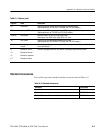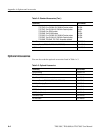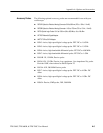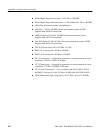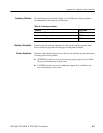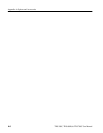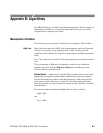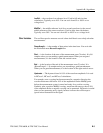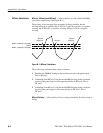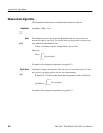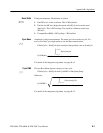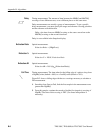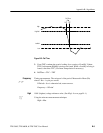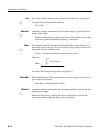
Appendix B: Algorithms
TDS 500C, TDS 600B, & TDS 700C User Manual
B–3
LowRef — the waveform low reference level. Used in fall and rise time
calculations. Typically set to 10%. You can set it from 0% to 100% or to a
voltage level.
Mid2Ref — the middle reference level for a second waveform (or the second
middle reference of the same waveform). Used in delay time calculations.
Typically set to 50%. You can set it from 0% to 100% or to a voltage level.
The oscilloscope also measures several values itself that it uses to help calculate
measurements.
RecordLength — is the number of data points in the time base. You set it with
the Horizontal menu Record Length item.
Start — is the location of the start of the measurement zone (X-value). It is 0.0
samples unless you are making a gated measurement. When you use gated
measurements, it is the location of the left vertical cursor.
End — is the location of the end of the measurement zone (X-value). It is
(RecordLength – 1.0) samples unless you are making a gated measurement.
When you use gated measurements, it is the location of the right vertical cursor.
Hysteresis — The hysteresis band is 10% of the waveform amplitude. It is used
in MCross1, MCross2, and MCross3 calculations.
For example, once a crossing has been measured in a negative direction, the
waveform data must fall below 10% of the amplitude from the MidRef point
before the measurement system is armed and ready for a positive crossing.
Similarly, after a positive MidRef crossing, waveform data must go above 10%
of the amplitude before a negative crossing can be measured. Hysteresis is useful
when you are measuring noisy signals, because it allows the oscilloscope to
ignore minor fluctuations in the signal.
Other Variables



